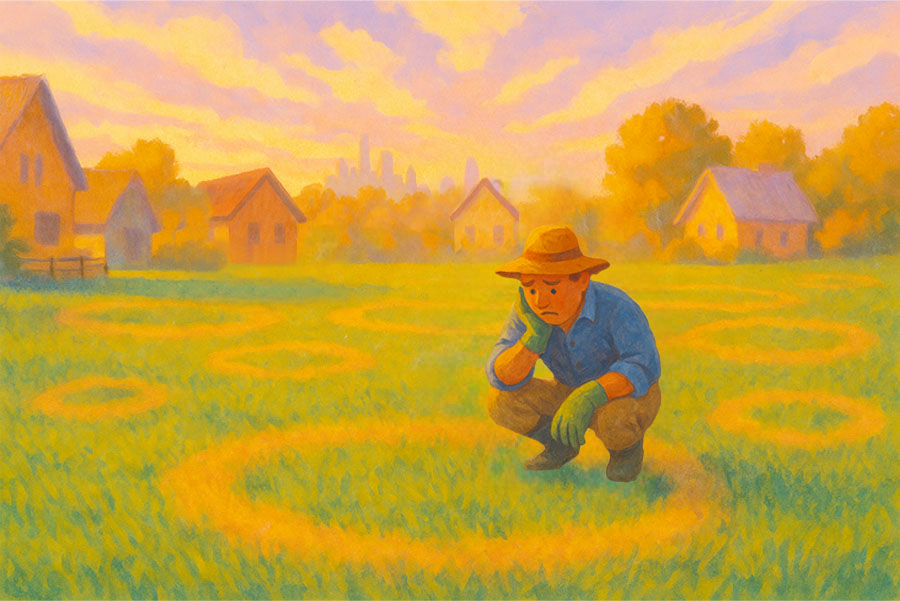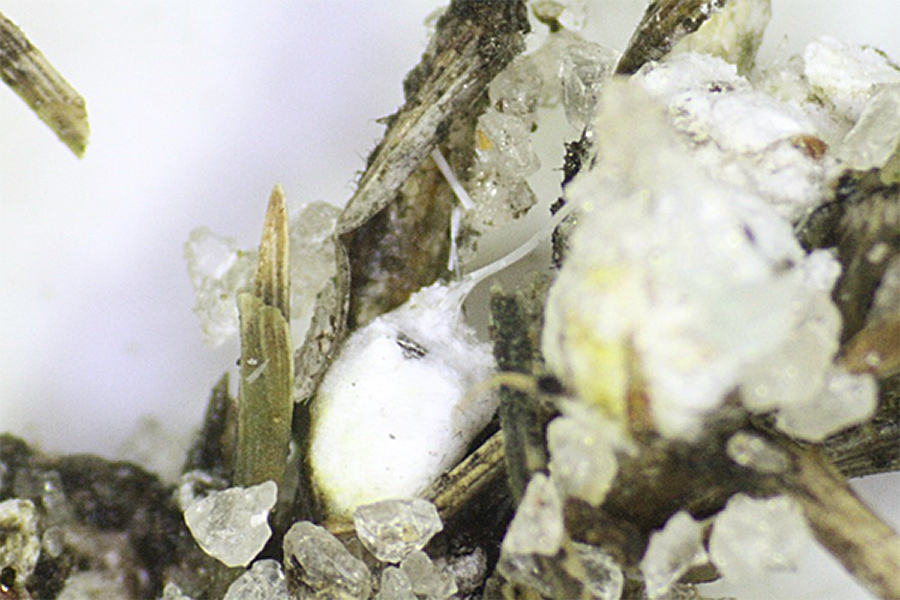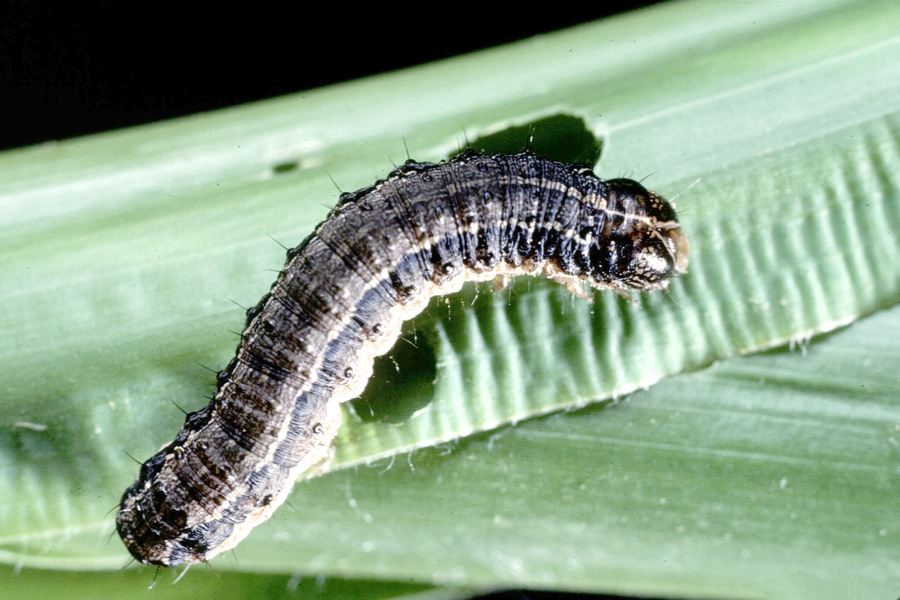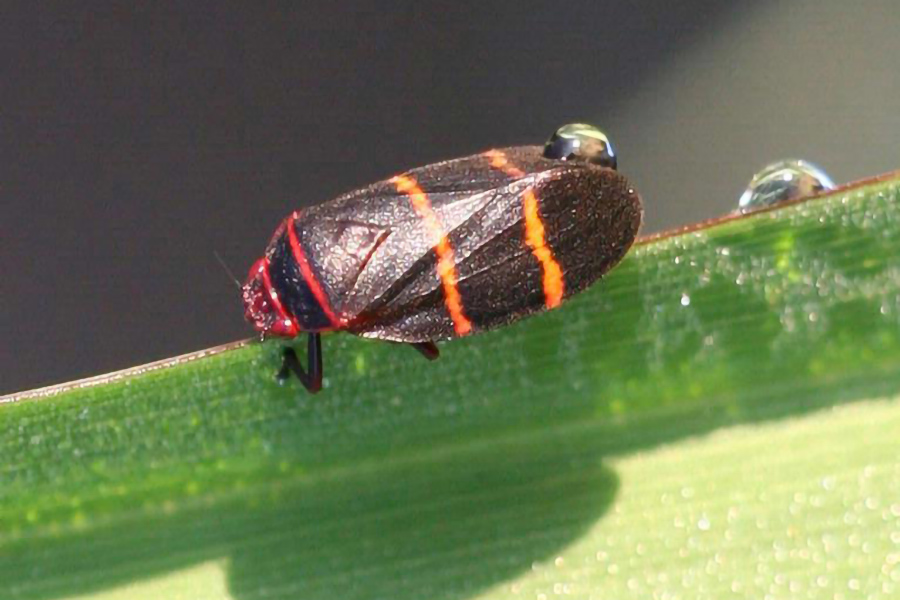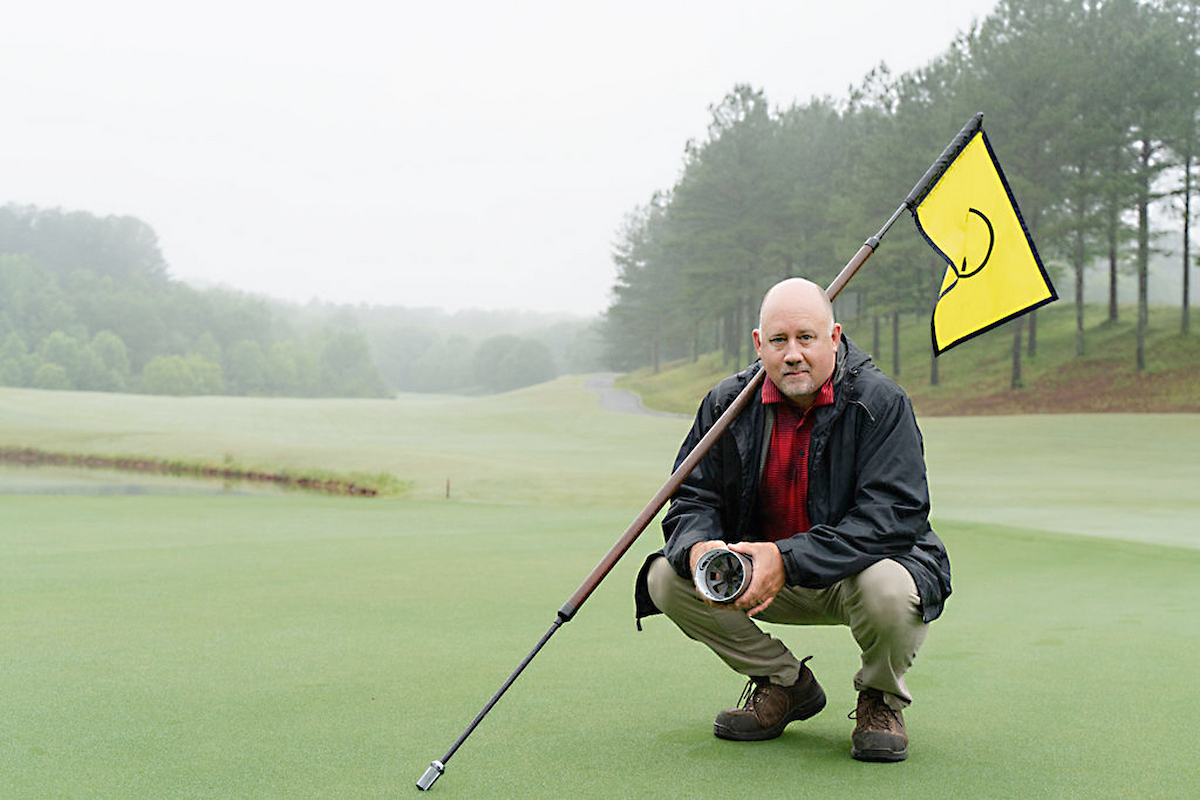About Fairy Ring in Turfgrass
Fairy ring is an important turfgrass disease affecting all turf species in Georgia. Fairy rings are caused by soil-borne basidiomycete fungi, which indirectly damage turfgrass by altering the soil’s physical and chemical properties, leading to localized dry spots and nutrient imbalances. The disease can appear on turfgrass grown on lawns, sports fields, and sod farms but it can be particularly damaging on golf greens.
The Pathogen
Fairy ring is an umbrella term for the disease, which can be caused by more than 60 species of basidiomycete fungi. The most common genera include Agaricus, Calvatia, Chlorophyllum, Clitocybe, Lepiota, Lycoperdon, Marasmius, Scleroderma, Vascellum, and Tricholoma. These fungi are wood-rotting organisms that thrive on organic matter, including thatch, lumber, stumps, and dead tree roots.
The fungi produce spores that are dispersed to nearby turf areas by wind, water, machinery, etc. After germination, the spores develop into mycelium (vegetative fungal growth), which spread underground, colonizing organic matter (Figure 1).
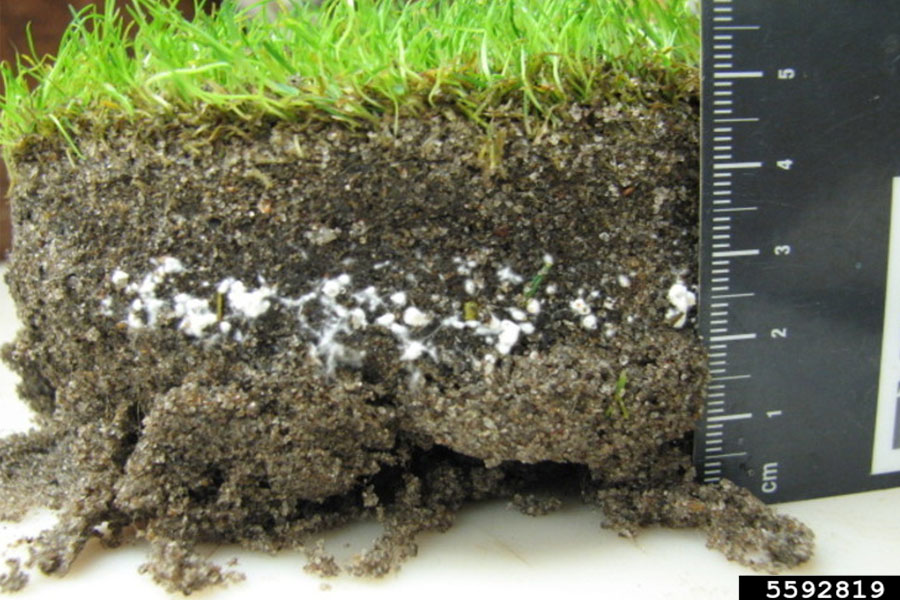
Most basidiomycete fungal hyphae (filament-like structures) produce typical clamp connections, which are specialized hyphal structures that ensure the equal distribution of nuclei during cell division (Figure 2).
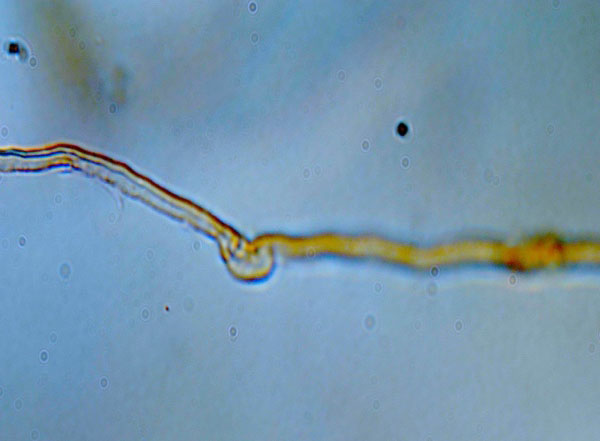
These fungi decompose plant tissues like lignin, cellulose, and other organic matter in the thatch and soil, creating hydrophobic (water-repelling) conditions that prevent water infiltration. Unlike pathogens that directly infect turfgrass, fairy ring fungi do not parasitize the plants. Instead, they affect their health by modifying soil properties, creating an unfavorable environment for root development (Figure 3).
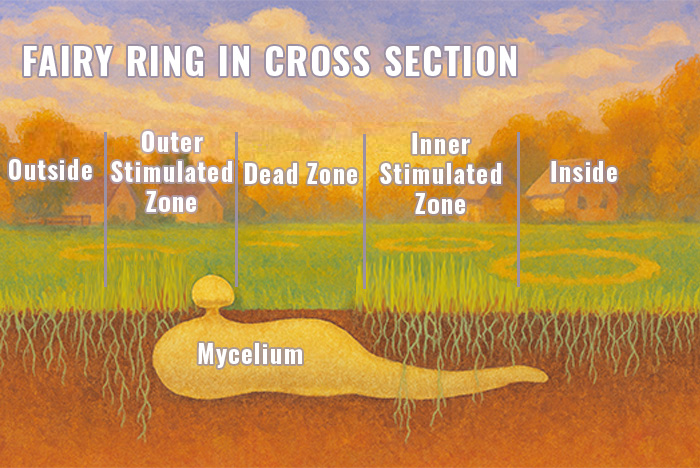
Symptoms
Fairy rings can occur as full rings, arcs, or semicircles of various sizes, severely impacting playability and the aesthetic value of turfgrass—particularly on sand-based greens in golf courses that are maintained at low mowing heights. The size of the rings can vary, ranging from less than 1 ft to several feet in diameter. On average, fairy rings exhibit annual radial expansion of 5 in. to 2 ft or more. According to the symptoms, there are three types of fairy rings:
Type 1 Fairy Rings
Symptoms appear as rings of necrotic or dead turf caused by severe hydrophobic residues and nutrient deficiencies (Figures 3 and 4). In some cases, ammonium nitrogen released by the fungus into the soil can accumulate to toxic levels for the turf.
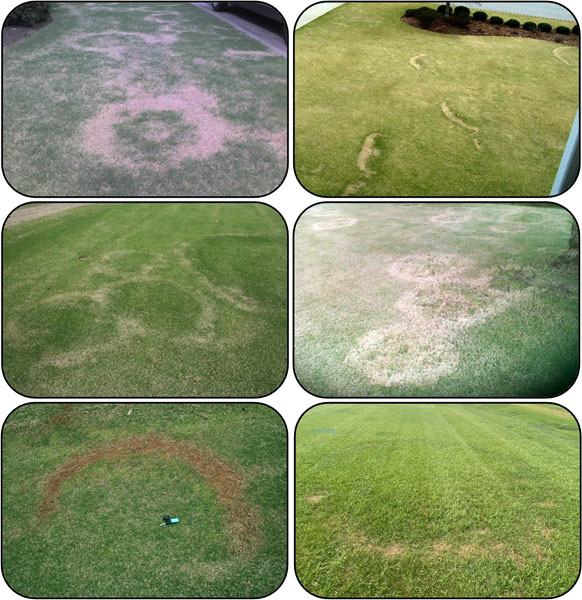
Type 2 Fairy Rings
Symptoms exhibit rings of lush, dark green, stimulated turf, resulting from the nitrogen released from organic matter decomposed by the fairy ring fungus (Figure 5). These symptoms are most evident in turf that is deficient in nutrients.
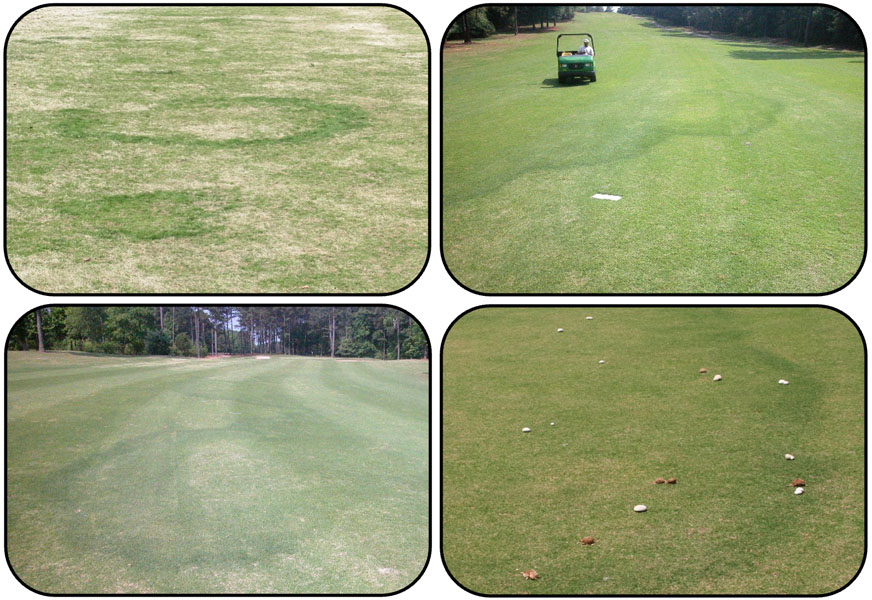
Type 3 Fairy Rings
Symptoms are characterized by rings of mushrooms or puffballs appearing in the turf, often with no noticeable turf damage. However, Type 2 and Type 3 symptoms might occur together (Figures 6 and 7).
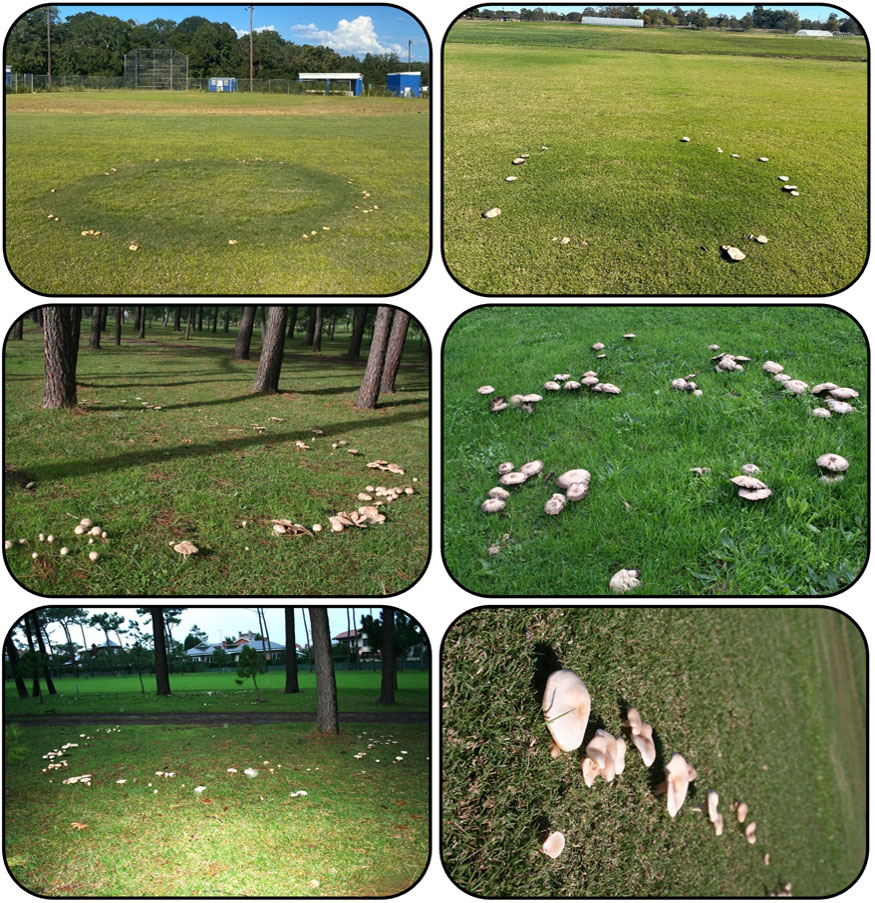
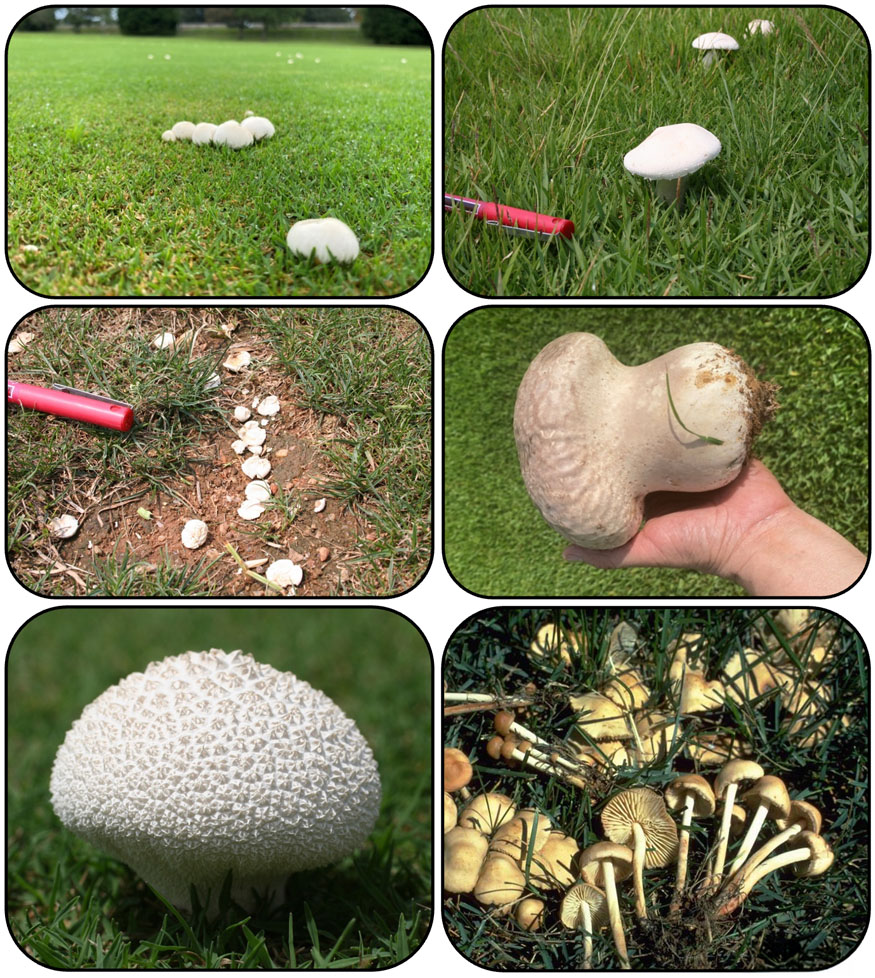
Conditions Favoring Fairy Ring
Type 1 and Type 2 fairy ring symptoms are most noticeable during hot, dry summer conditions and become more pronounced under drought stress. In contrast, Type 3 fairy ring symptoms are more frequently observed during prolonged wet conditions. Fairy rings tend to recur year after year. Fairy rings can rapidly transition from Type 2 (green rings) to Type 1 (dead rings) during summer heat stress.
Fairy ring development is influenced by several factors, including:
- Organic matter accumulation: Excess thatch and organic debris serve as a food source for fungi.
- Soil hydrophobicity: Fungal mycelia coat soil particles, leading to water repellency and localized dry spots.
- Nitrogen deficiency: Slow-growing, underfertilized turf is more susceptible.
- Moisture fluctuations: Wetting and drying cycles can trigger disease expression.
- Low mowing heights: Intensely managed turf, particularly sand-based greens, is more vulnerable to severe symptoms.
Disease Control
Managing fairy rings is challenging because the soil becomes almost impervious to water penetration. Successful management requires integrating genetic, cultural, chemical, and biological strategies to reduce the impact of fairy rings and prevent recurrence.
Genetic Control
Currently, there are no turfgrasses with documented resistance to fairy rings. However, selecting turf species and cultivars with dense root systems and drought tolerance may reduce disease severity.
Cultural Control
For residents: In lawns and residential turfgrass, early preventative measures can help prevent the establishment of the fungi that cause fairy rings. Removal of large woody materials such as stumps, lumber, and dead tree roots before planting turf will help to reduce the incidence of fairy rings. If possible, remove woody materials from affected areas, then fill with new soil, followed by reseeding or resodding. Managing fairy rings in home lawns can often be more practical and cost-effective by applying small amounts of fertilizer and maintaining regular mowing.
For professionals: On golf courses, the prevention, reduction, and elimination of thatch, the reduction and/or elimination of underground mycelium, and ensuring proper soil aeration are important measures to manage fairy rings. These measures can be achieved through routine aerifying, topdressing, and vertical mowing. It is important to maintain optimal soil moisture levels, avoiding both excessive wetness and dryness.
Applying nitrogen fertilizer can also help mask the dark green grass in the stimulation zone of Type 2 symptoms. However, caution should be exercised when using nitrogen, as too much can overstimulate the grass and lead to the development of other turfgrass diseases. Increasing mowing heights to reduce stress on the affected turf can be useful to lessen the severity of fairy ring symptoms.
Chemical Control
For residents: Chemical control for fairy rings may often be unnecessary and impractical. Therefore, it is advisable to limit chemical use and practice cultural methods to mitigate the symptoms. Preventative measures to avoid the establishment of fairy rings are the best management strategy.
If severe symptoms are observed and the loss of grass is abundant (Figure 8), residents can implement a spot-treatment program with labeled fungicides. Check the most current version of the Georgia Pest Management Handbook—Home and Garden Edition (https://extension.uga.edu/publications/detail.html?number=SB48).
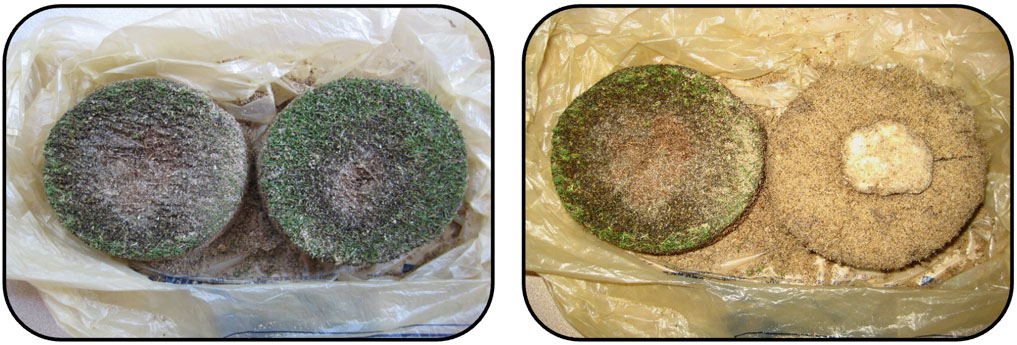
For professionals: Fungicides can be highly effective in managing fairy rings when applied early in the growing season at sites with a history of the disease. To achieve optimal control, apply fungicides when the 5-day average soil temperature at a 5 cm depth ranges between 55–60 °F.
Several fungicide groups are labeled for fairy ring control, including demethylation inhibitors (DMIs; FRAC code 3), succinate dehydrogenase inhibitors (SDHIs; FRAC code 7), strobilurins (quinone outside inhibitors [QoIs]; FRAC code 11), and polyoxins (FRAC code 19).
Recommended fungicide trade names, application rates, spray intervals, or the use and/or combination with wetting agents can be found in the Georgia Pest Management Handbook—Commercial Edition (https://extension.uga.edu/publications/detail.html?number=SB28).
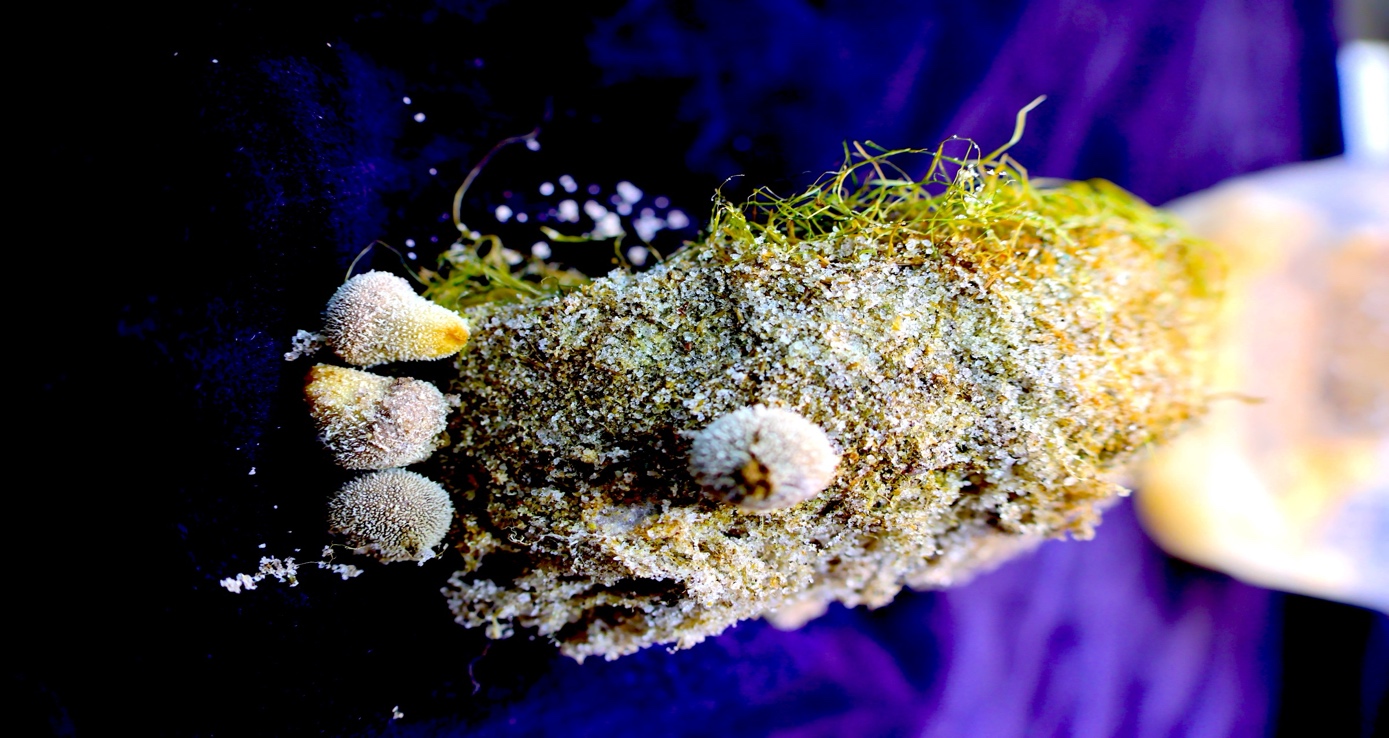
Summary
Fairy ring remains one of the most persistent turfgrass diseases, requiring a multifaceted approach for effective management. While no single strategy guarantees complete control, you can significantly mitigate disease impact by integrating thatch reduction, water management, fertility optimization, and targeted fungicide applications. Understanding the underlying pathogen biology and environmental factors influencing fairy ring development is key to successful long-term management in residential lawns, landscapes, golf courses, and sports turf settings.
References
Butler, L., & Kerns, J. (2019). Fairy ring in turf. NC State Extension. https://content.ces.ncsu.edu/fairy-ring-in-turf
Clarke, B. B., Vincelli, P., Koch, P., & Chou, M.-Y. (2024). Chemical control of turfgrass diseases 2024 (Publication No. PPA-1). University of Kentucky Cooperative Extension Service. https://uknowledge.uky.edu/anr_reports/185/
Fidanza, M. (2009). Fairy ring 101. USGA Green Section Record, 47(2), 8–10. https://www.usga.org/content/dam/usga/pdf/imported/course-care/090308.pdf
Latin, R. (2013). Turfgrass disease profiles: Fairy ring (Publication No. BP-113-W). Purdue University Cooperative Extension Service. https://www.extension.purdue.edu/extmedia/bp/bp-113-w.pdf
Martinez, A., Burpee, L., & Allen, T. (2010). Guide to turfgrass fungicides (Publication No. B 1316). University of Georgia Cooperative Extension.
Martinez, A., Pearce, M., & Burpee, L. (2020). Turfgrass diseases in Georgia: Identification and control (Publication No. B 1233). University of Georgia Cooperative Extension. https://extension.uga.edu/publications/detail.cfm?number=B1233
Martinez-Espinoza, A. (2024). Turf Disease Control. In A. F. Johnson & V. Dee (Eds.), 2024 Georgia Pest Management Handbook—Commercial Edition (Vol. 2, pp. 435–469). University of Georgia Cooperative Extension. https://extension.uga.edu/publications/detail.html?number=SB28
Martinez-Espinoza, A. (2024). Home Turf Disease Control. In A. F. Johnson & V. Dee (Eds.), Georgia Pest Management Handbook—2024-2025 Home and Garden Edition (pp. 128–132). University of Georgia Cooperative Extension. https://extension.uga.edu/publications/detail.html?number=SB48
Miller, G. L. (2010). Biology and management of fairy rings on golf putting greens [Unpublished doctoral dissertation]. North Carolina State University.
Miller, G. L., Grand, L. F., & Tredway, L. P. (2011). Identification and distribution of fungi associated with fairy rings on golf putting greens. Plant Disease, 95(9), 1131–1138. https://doi.org/10.1094/PDIS-11-10-0800
Miller, G. L., Soika, M. D., & Tredway, L. P. (2012). Evaluation of preventive fungicide applications for fairy ring control in golf putting greens and in vitro sensitivity of fairy ring species to fungicides. Plant Disease, 96(7), 1001–1007. https://doi.org/10.1094/PDIS-09-11-0779-RE
Singh, R., & Beasley, J. (2018). Louisiana home lawn series: Fairy ring (Publication No. 3624-W). Louisiana Cooperative Extension Service. https://www.lsuagcenter.com/profiles/aiverson/articles/page1539200031374
Smiley, R. W., Dernoeden, P. H., & Clarke, B. B. (2005). Compendium of turfgrass diseases (3rd ed.). APS Press. https://doi.org/10.1094/9780890546154
